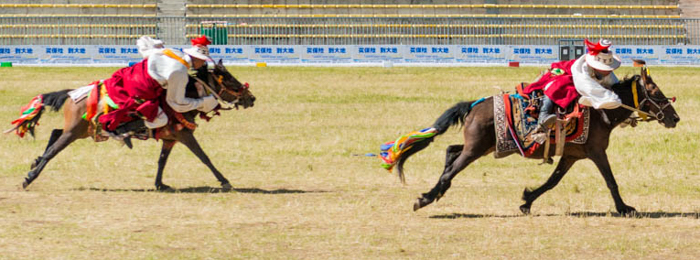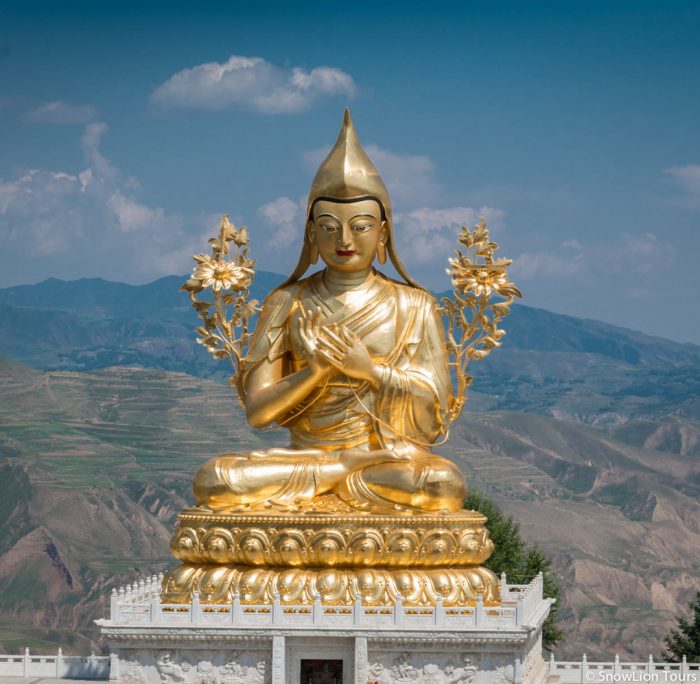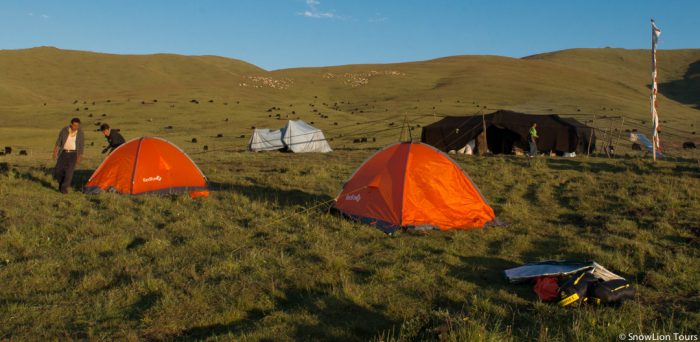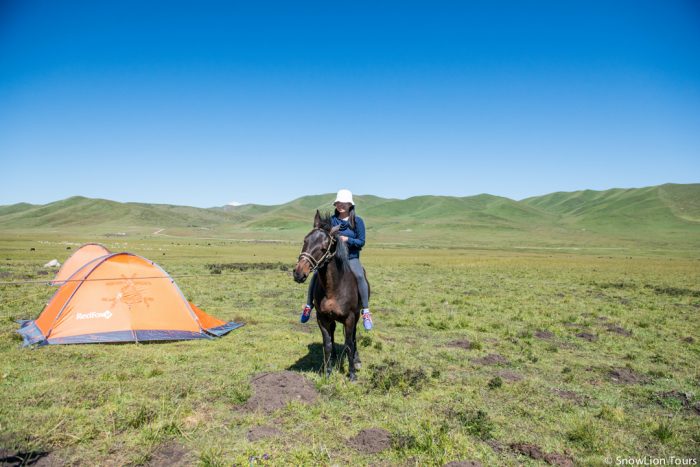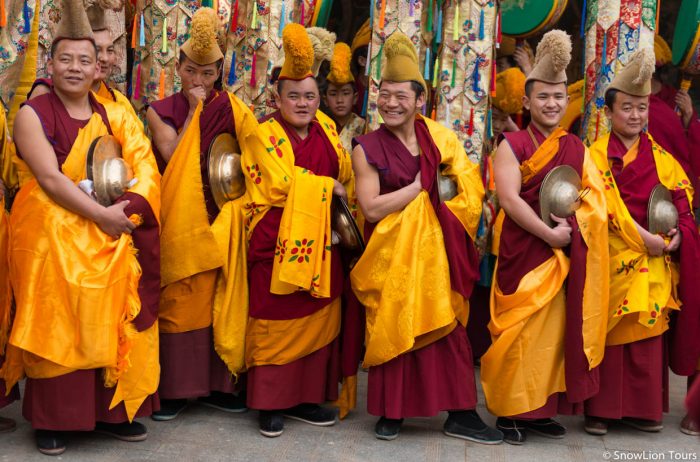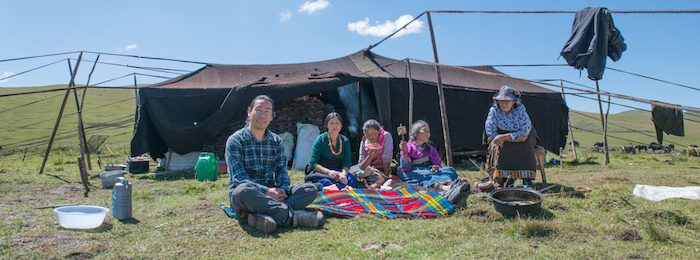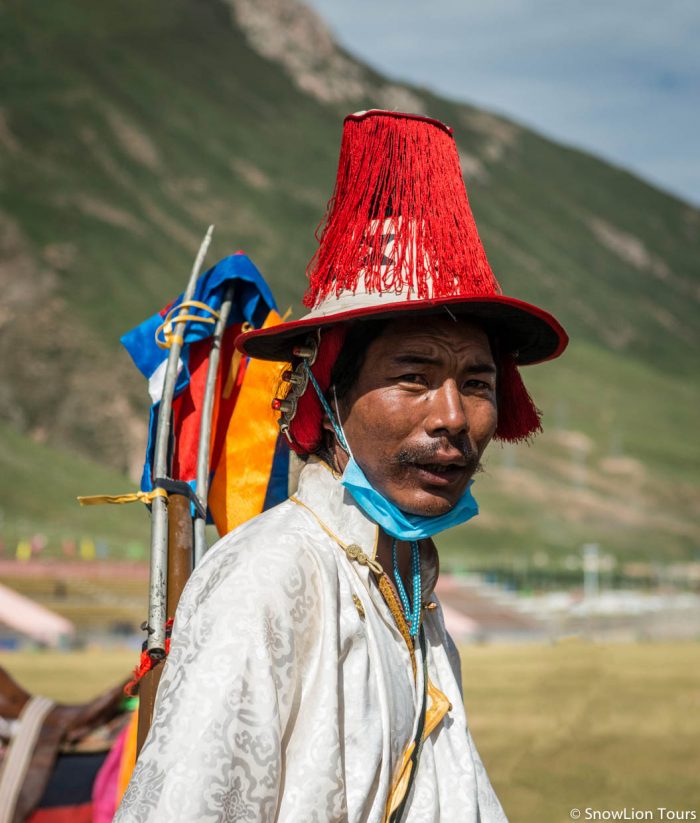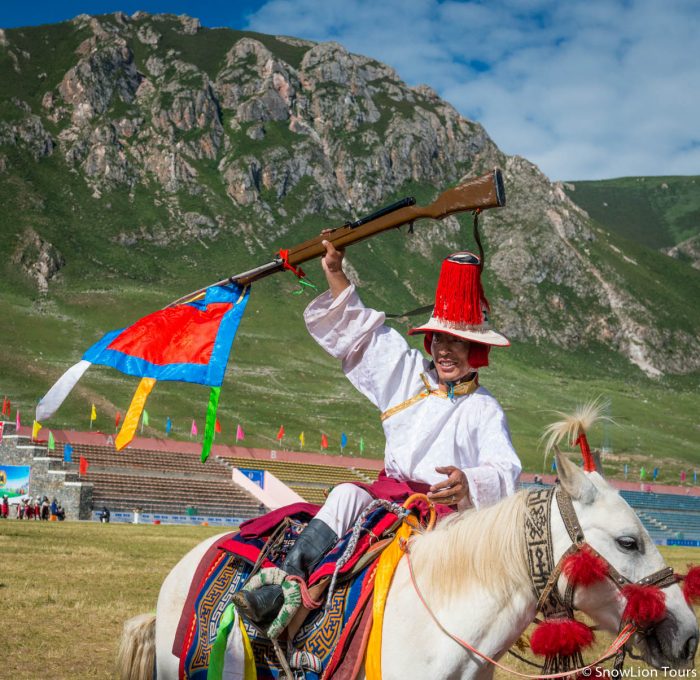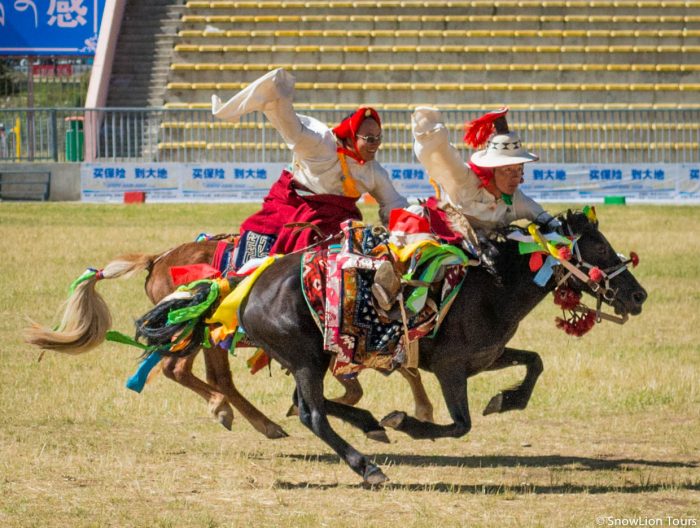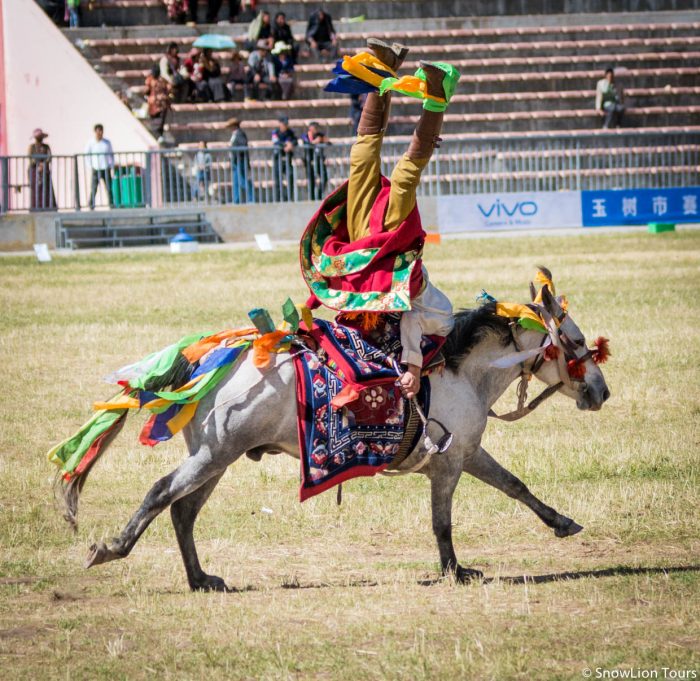July 24rd /Day 1: Arrive Xining [2270m]
Arrive Xining by plane or train. Our guide and driver will pick you up and transfer to your hotel. If time allows, visit Qinghai Tibetan Medical and Cultural Museum which is the by far the best and most authentic Tibetan Museum in the world. By visiting different halls of this museum, you are traveling from Tibetan medicine, religion, history, politic, astrology, geology and other important subjects which is dominated in the history of Tibet.
Because of it’s group tour, we only arrange to visit this museum if 2 or more members of this group want to visit on this first day of your tour.
July 25th /Day 2: Xining – Qinghai Lake – Dredzong Monastery 3200m [296km] 5 – 6 hours
Take pictures of the blooming yellow flowers along the shores of Qinghai lake, Qinghai Lake is the largest lake in the China and largest salt lake in Asia. Qinghai Lake lays about 155km west of Xining. You can ride horse or take a short walk at the lake shore. After that, we will drive to Dredzong Monastery known as the kingdom of monkeys. a remote Buddhist monastery set on the side of a rugged mountain at over 3600m. Dredzong provides excellent hiking opportunities. Overnight in Xinghai.
July 26th /Day 3: Dredzong Monastery – Jyekundo (Yushu) 3670m [580km] 7 – 8 hours
Drive to Jyekundo or Yushu prefecture, a large town populated almost entirely by Tibetans. at an elevation of 3,700 m. The town is located in the Batang River valley, surrounded by mountains. the entire area of the Yushu region is a realm of nomadic pastoralists, Jyekundo is one of the few places in this part of the vast Tibetan highlands where permanent settlement proved to provide a livelihood for Tibetan farmers and traders. Here, peasants grow barley on riverside fields. Over night in Yushu.
July 27th/Day 4: Yushu Horse Racing Festival [3710m]
Before the festival started, hike or drive up to Jyegu monastery, located on a hill behind the town. And it was a Bon monastery originally and later converted to Kagyu and now it is a Sakya monastery, the monastery was completely destroyed during the earth quake in 2010. now the reconstruction is almost done. Afterwards, attend the horse racing. Yushu or Jyekundo Horse Racing Festival is one of most popular horse racing festivals in Tibet. The festival is held from 25thof July to 28thJuly and the first day arrange as a opening ceremony of various government activities, and the second and third day will be the main activities of horse races. The festival also consists of some other interesting cultural events of traditional dances from Kham Tibet, singing, Tibetan dress show, yak riding and other cultural activities. The main purpose of the festival is the commemoration of the legend King Gesar combines with the spread of awareness of three rivers sources. Overnight in Jyekundo.
July 28th/Day 5: Yushu Horse Racing Festival [3710m]
In the morning, visit Gyana Mani Stone Pile, a huge pile of stones carved with Tibetan Buddhist prayers. The largest field of mani stones in the whole Tibet , approximately 1sqkm in the area. The original temple on this site was constructed in the late 18thcentury by the first Gyana Tobden Tulku. Afterwards visit different festival site, the festival likely hold at Batang Grassland which is a big open area in the mountains, this flat grassland is full of colorful grassland in July. You may also be able to see Yak racing and archery competition during the festival. Overnight in Jyekundo.
July 29th/ Day 6: Yushu – Mt Amnye Machen – Machen [3710m] 410km 5-6hours
In the morning, visit Nampar Nangdze Lhakhang, which was originally a rock caving Buddhas, later built a temple on the site. The Chinese princes Wenchen said to stayed here once on the way to Lhasa. The main stone relief image in the temple is the image of Vairocana flanked by the eight Bodhisattvas. Afterwards drive back to Machen via Mt Amnye Machen. Mt. Amnyi Machen is one of the main holy mountains in Tibet, it is revered in both Tibetan Buddhism and Bon religion as the chief indigenous deity Machen Bora of Amdo Tibet. The existence of this huge mountain results in one of the great bends of yellow river. We will stop at bottom of this majestic snow mountain, walk to the Halong glacier or hike up to a mountain opposite it to have a panoramic view of Mount Amnye Machen. Afterwards continue drive to Machen. Overnight in Machen.
July 30th/Day 7: Machen – Ragya Monastery – Tsekog [3680m] 280km 4-5 hours
Head out to Tsekog. Along the way, stop off at Ragya Monastery, a branch of Sera Monastery in Tibet Autonomous Region. Ragya is located at an open red clay valley on the Yellow River bank. There is a half hour circumambulation path around the monastery which you can follow with local pilgrims. About 40km west of Tsekog town along the main road, you can visit Hor monastery and the Mani stone just behind the monastery, the monastery originally was a tent camp, were constructed by the first Terton Rinpoche in 1831, and the monastery considered a branch of Dodrubchen.. Finally, we reach Tsekog town, one of the fast growing town in this region. Stay overnight in Tsekog.
July 31st /Day 8: Tsekog – Taktsang Lhamo (Langmusi) [3300m] 260km 5 hours
In the morning, drive to Taktsang Lhamo Monastery. Taktsang Lhamo is the name of a town which has two monastery located at the two sides of the white dragon river. One monastery called Kirti monastery founded by Kirti Rinpoche in 1472. and the other monastery called Sertri monastery. In the afternoon, drive through large, rolling grasslands where nomads herd their animals. Stay overnight in Taktsang Lhamo.
August 1st /Day 9: Taktsang Lhamo [3300m]
This day will be an optional day. You can go hiking or horseback trekking. Tsatsang Lhamo offers great hiking and riding. Stay overnight in Taktsang Lhamo.
August 2nd /Day 10: Taktsang Lhamo to Labrang (Xiahe) [2900m] 190km 3 hours
Drive through vast Amdo grassland and see the beautiful Sangkok grassland, where nomads take their yaks and sheep to graze. While talking a walk through town, get a glimpse of daily life in a Tibetan village. Stay overnight in Labrang
August 3rd /Day 11: Labrang – Repkong (Tongren) [2495m] 120km 2 hours
In the morning, a monk will give you a guided tour of Labrang monastery, intimately describing the symbolism of Tibetan Buddhist deities and Tibetan Buddhist philosophy. Labrang is also cosider to be the cultural. Religious and trade center of Amdo region of Tibet. and in the afternoon, drive to Repkong and pass through many small villages. Stay overnight in Repkong.
August 4th /Day 12: Repkong (Tongren)
In Rebkong, visit Rongwo Gonchen, the principal monastery of Rebkong area and the mother monastery of some 8 other branch monasteries in the reigon, The Rongwo Gomchen monastery originally constructed in 1310 and developed by the Sakya master Samten Rinchen as Sakyapa monastery, it was reconstitute as a Geluk monastery by Shar Kalden Gyatso (1607-1677). You can also take a short walk in the main street where you can see many local crafts shops and as well as stores selling nomadic daily product and supplies. Stay overnight in Rebkong.
August 5th /Day 13: Rebkong Shaman Festival [2480m]
Today you will be visiting the Shaman festival in Rebkong. Shaman festival also called Lurol in Tibetan which is a celebration or ceremony honors to the local mountain gods and requests they bestow good health on villagers and a successful harvest on the community. The festivals is celebrating each villages with a slightly different activities, but most of them are same. Men beat drums, women dance, boys perform dramas and girls wear their traditional clothes and wear best jewleries. The festival is lively and colorful, the mountains god is invited to the ceremony whereas the Shaman serves as his medium and dancing in the crow. Stay overnight in Rebkong.
August 6th /Day 14: Xining – Shachung Monastery – Rebkong [2480m] 220km 4 hours
Drive from Rebkong to Xining via Shachuang monastery, which is located on a mountaintop and has a great view of Yellow River in the opening valley. This is one of the most historic and renowned Geluk monasteries in Amdo, founded in 1349 by Lama Dhondup Rinchen, the teacher of Tsongkapa. Though the monastery is famous among Tibetans but it is not well known in the tourism and most of the visitors are Tibetan from pilgrims from all over the Tibetan regions. Afterwards, we will descend into the valley and drive to Xining via some Muslim and Tibetan villages. Along the way, we will a catch beautiful views of the Yellow River as driving along with it.




